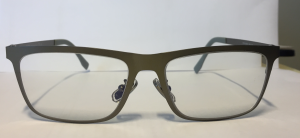Presbyopia (commonly known as “lao hua”) is a condition characterized by the gradual loss of the eyes ability to focus on near objects. It is typically associated with the natural aging process, with symptoms typically emerging during the late 30s to early 40s and steadily deteriorating until the age of 60.
The lens of the eye becomes less flexible with age, making it harder for the eye to focus on close-up objects. This results in difficulty reading small print, using a smartphone, or performing tasks that require close vision. People with presbyopia often find themselves holding reading materials at arm’s length to see them more clearly.
Causes of Presbyopia
Presbyopia happens because the crystalline lens and eye muscles loses flexibility, making it difficult to change shape for focusing on near objects.
While presbyopia is a natural part of aging and typically unavoidable, certain factors like maintaining overall eye health and minimizing eye strain through proper lighting and regular breaks from close work may help to reduce its impact.
Symptoms of Presbyopia
- Blurry vision and squinting when reading small prints
- Difficulties focusing on near objects
- Moving reading materials further away to make the letters clearer
- Having eyestrain, headaches or fatigue when doing near work
- Requiring brighter lighting when doing near work
If you notice any of these symptoms of presbyopia, it’s advisable to schedule a comprehensive eye examination at our clinic. If you already wear glasses or contact lenses but still experience these issues, you may require a new prescription. Regular eye examinations are particularly recommended after the age of 40 to monitor for age-related conditions.

Management of Presbyopia
You have the option of choosing between prescriptive glasses or contact lenses.
Prescriptive glasses come in different types, including:
- Single vision reading glasses: Specifically designed for close-up tasks like reading.


- Bifocals: Glasses with two different optical powers in one lens, catering to both distance and close-up vision.

- Progressive lenses: Glasses providing a seamless transition between distance, intermediate (computer) and near vision without visible lines.

Contact lenses to correct presbyopia comes in different types including:
- Multifocal contact lenses: To give you a balance between distance and near vision without having to wear spectacles.
- Monovision contact lenses: One eye is corrected for distance and one eye is corrected for near. However, spectacles may be needed during driving to have 3D vision for parking.
Both options require adaptation time.
Multifocal contact lenses:

Monovision contact lenses:

To schedule an appointment or to know more about presbyopia, please call 6777 6058. Alternatively please send us an enquiry.
